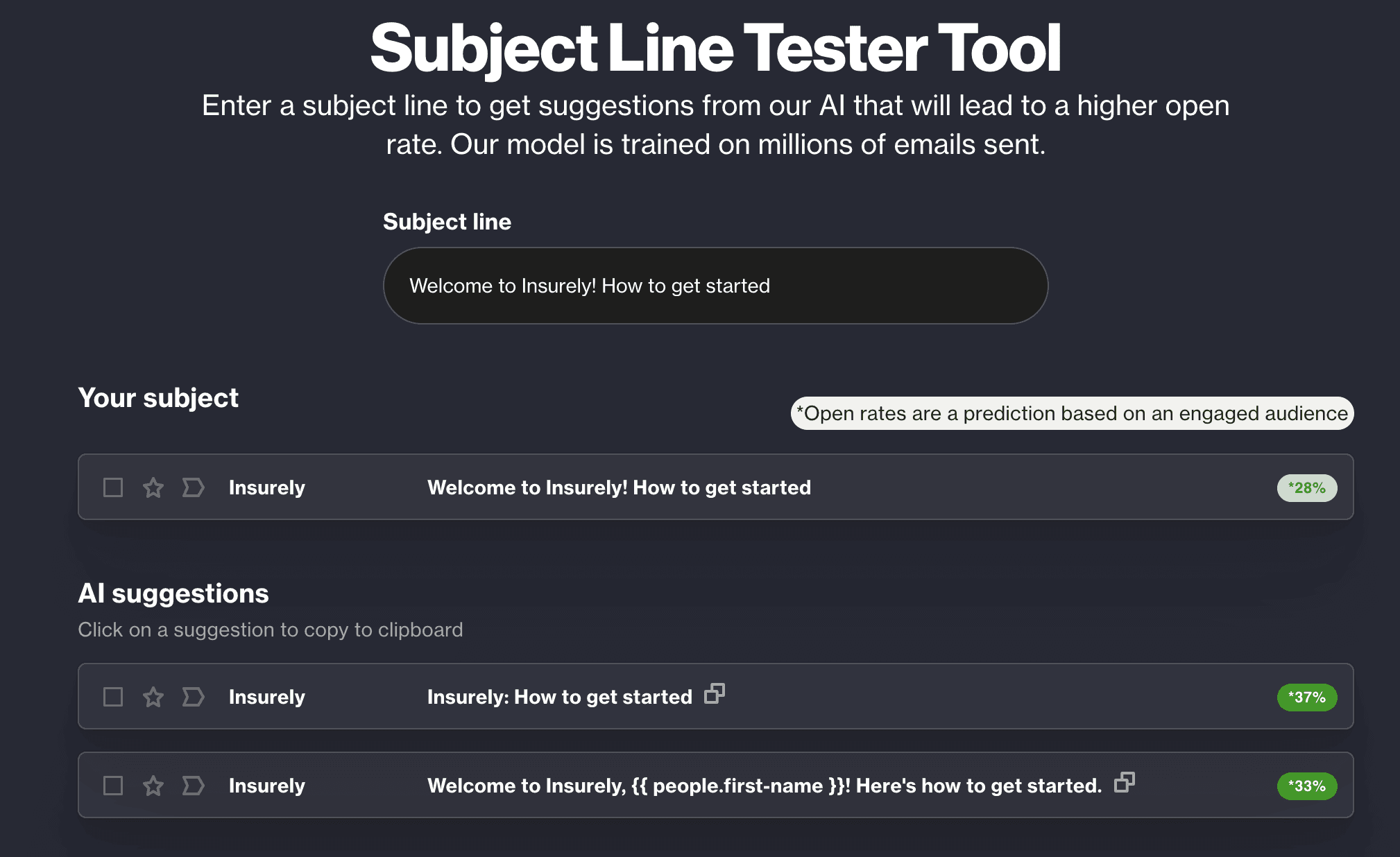The welcome email presents a rare moment in email marketing: Your customer is expecting and even looking out for an email from your brand. It’s one of the best-performing emails you’ll send, the time to make a strong first impression, and one of the few emails every single customer you have will receive.
Cramming all your brand messaging and onboarding information into that one email will only lead to customer confusion and overwhelm. Instead, think about how you can use that first email to set the stage for a welcome email series — one that provides true value to your new customers and inspires them to open every send that follows.
What is an email welcome series?
An email welcome series is a sequence of emails that helps your new customer get properly acquainted with your brand and product. For SaaS products, the series generally includes onboarding steps that help the customer reach their ‘aha moment’.
Each email in the sequence will build on the last, with communication stretching out over five or more emails sent over a few weeks. Typically these are set up in a journey with emails triggered by customer behaviors or time delays. The idea is to drip-feed information to your customer over time, and convey:
What your brand represents
What problem you solve for your customer
Why your customer should keep opening your emails
How to use your product or engage with your service
How your customer can get the most out of your products and/or services
Best practices for setting up an email welcome series
When setting up your welcome email series, it’s important to consider these five components:
Subject lines, preview text, and ‘From’ field
Personalized email content
Expectation setting and opt-out/preference center options
Calls to action
Behavioral triggers and time delays
Follow these tips to optimize your emails:
1. Subject lines, preview text, and ‘from’ field
These are the first three things your customer will see, and they will play a significant role in determining whether your email gets opened or not.
Subject lines are the most important of the three, aim for something that is short and sharp, personalized, and includes the most important message at the start before you get cut off (iPhones cut off the subject line at 32 characters). Test your subject lines by setting up A/B testing or running it through Ortto’s AI subject line tester.
The ‘From’ field is next. Ideally you want the ‘From’ field to show a real person’s name as well as the company name. For example, ‘Chloe @ Ortto’. If members of your Success team are assigned to specific customers for the onboarding process, you could use dynamic tags to populate the ‘From’ field with their name.
Finally, preview text can be used to add more context to the subject line or tease something else in the email. Preview text is not make-or-break like a subject line, but it’s worth paying attention to, especially in that very first email you send.

2. Personalized email content
We’re in an era of hyper-personalization, so customers are expecting to receive emails that are relevant to them. This starts with audience segmentation. Set your journey up so that your customers receive the information that is most relevant to them.
For example, if you’re an insurance company and they’ve purchased health insurance, you will want to ensure their welcome emails help them navigate this product before you speak to the rest of your insurance offering. If you’re a B2B in the HR space, you might have a different welcome message for large businesses with multi-person HR teams and startups.
You can also use dynamic content to personalize every email element, including recommended content, personal or payment information, and more.
3. Set expectations and provide options
When customers are expecting to receive an email, they’re highly unlikely to mark it as spam and far more likely to open it. These two things don’t just help that one customer get familiar with your brand and product or services, they help send positive signals to email service providers to improve your email deliverability.
Use your first email to set expectations around what’s to follow in the welcome series. Fireflies do a great job of this in the example below.

In the last email of your welcome series, outline what the customer can expect in terms of regular communications moving forward. If you have a number of regular sends with different audiences associated, give them a chance to set their preferences and opt-in to specific sends (e.g. Product updates or Newsletters).
Finally, ensure every single email you send gives your subscriber an opportunity to opt out completely — this is not just a nice-to-have. Google and Yahoo have announced that, as of February 2024, this will be a requirement for all bulk senders.
4. Calls to action
It’s best to include one clear call to action in each email you send and you want each action to build on the one prior, ultimately helping your customer become more familiar with your brand and product or service over time.
When it comes to design, an eye-catching button and two-word CTA is best, and you can use the inverted pyramid method to drive the eye downwards to the final CTA.

5.Behavioral triggers and time delays
Consider what connects each of your emails. If your welcome series is about onboarding a customer or educating them, consider how necessary each step in the sequence is for the next to take place. For example, if you are a project management SaaS your first two emails might ask your customer to create a project and mark it as completed. If your customer never takes the first action (creating a project), the email about marking it as completed will be irrelevant. Instead, you’ll want to remind them to create the project in the first place and provide some additional help documentation.
In cases where your welcome series introduces your brand values, product, or services, and what customers can expect to see in their inbox, consider how much time should elapse between emails. Aim for sends every 5-8 days to stay top of mind without bombarding them, and if you’re a B2B, remember to set things up so they’re not receiving messages on the weekends.
Benefits of having an automated email welcome series
As your most engaged and switched-on audience segment, new customers are far more likely to open your emails. If they're met with content that is useful, engaging, and relevant, your audience will be more likely to get in the habit of opening and clicking on your emails.
But the benefits don’t end there. Here are five more reasons a welcome series is so important:
1. Stay top of mind
A welcome email series allows your brand to get in front of your new customers repeatedly, while they are at their most engaged. This keeps your brand top of mind during a golden window of opportunity.
2. Share your brand's story
We tend to gravitate towards certain brands (and ultimately buy from them) because we connect with their story and their ethos. A welcome email series gives your business the chance to tell your subscribers more about you.
3. Build trust
A welcome email series allows you to build trust over time — trust in your brand and trust in the fact that the emails you send will be relevant, worthy of their attention, and will adhere to the preferences they’ve set.
4. It doesn’t overwhelm (or annoy) new subscribers
Many businesses make the mistake of cramming as much information as possible into a single welcome email. Your company story, welcome message, product recommendations, onboarding steps, and more are squeezed into one extremely scroll-heavy email.
When subscribers are faced with emails containing too much copy and multiple calls to action, they’ll feel overwhelmed. A welcome email series removes this problem so you can focus each email on a specific message, building on the narrative over time.
Final word
A welcome series sets the tone for the rest of your email communications with a customer. By sharing compelling, relevant, and useful content in a series of well-timed emails, setting clear expectations around sends, and giving customers opportunities to change their preferences or opt out, you’ll establish trust at a crucial moment in the relationship.



